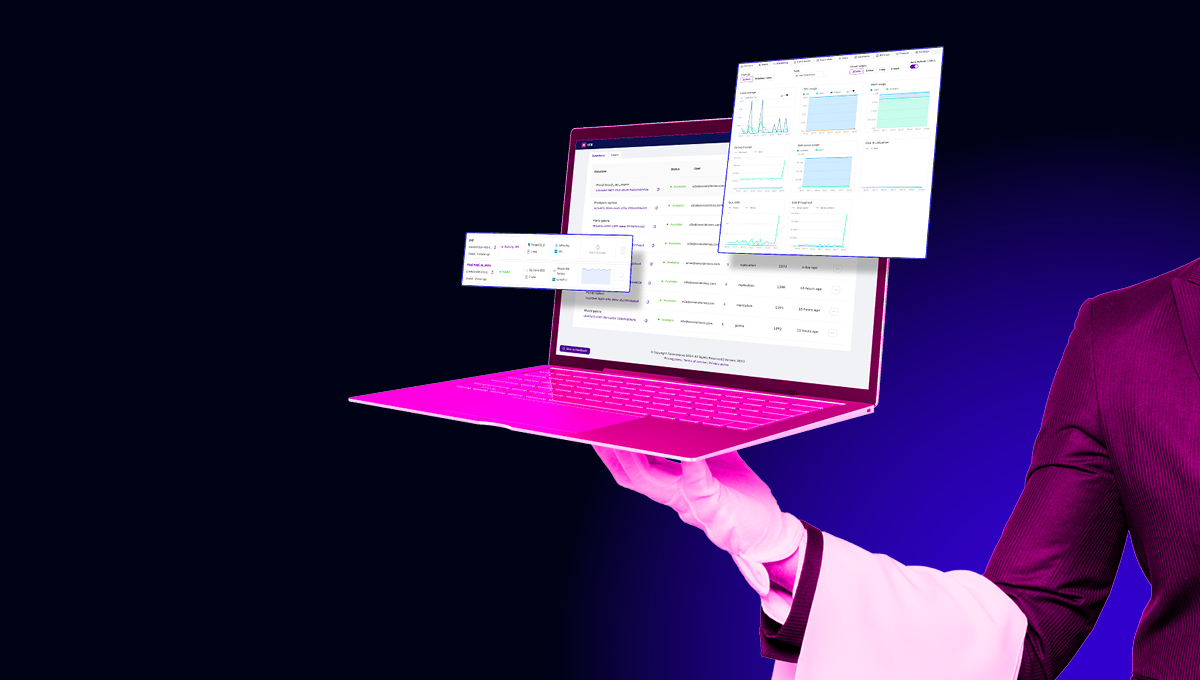blog
No Database Experience? DBaaS can Help!

Chances are, you might find yourself working with databases sooner than you think. Most people would probably assume that those people working with databases have some experience as database administrators beforehand, or perhaps they were developers who were deeply interested in databases and began their database journey from there. But what if you don’t have any database experience and still want to jump on the database bandwagon? Here’s where database-as-a-service (DBaaS) solutions can step in!
Why DBaaS?
Database-as-a-service (DBaaS) solutions can be of great assistance if you want to learn how databases work under the hood. You see, many developers choose such solutions already after they are very familiar with what database-as-a-service solutions can offer, but some are less savvy in this space.
Database-as-a-service solutions, generally, offer at least some of the following features:
- They provide an in-depth overview of what your database clusters are capable of. If you’re using the cloud, they will tell you what provider are you using, in what region, etc., they will provide some general information about your database cluster: what database version it’s using, whether it’s available or not..
- They will provide you with all of the information regarding the services connected to your database instance: you will be able to see whether your database instances are running or not, what’s their role, their connection information, etc.
- They will monitor the average load of your database clusters, tell you how are they using CPU or RAM resources, network and disk space, what’s their disk I/O utilization, disk IOPS or disk throughput, etc.
- They will monitor the performance of your queries, they will tell you how many times your queries executed, etc.
- They will let you add databases or users to your database instance without using a CLI.
- They will provide relevant information regarding the backups of your database instances. You will be able to observe their status, when were they created, when did the backups occur, etc.
Why CCX as a DBaaS?
Now that you have some insight into why people generally choose DBaaS to assist with their database tasks, we will tell you why should you use CCX as a solution of choice.
Once you log into CCX, you will see an overview of the data stores you have imported into this system:

Click on a data store and you will be able to observe all of the information relevant to your database clusters. For example, here’s how the main page looks like:

You will see the state of your services (whether your services are running fine or they need any attention), you will be able to observe the cloud services you have set up, you will be able to see the version of your database cluster, its topology, tags, network and instance information too: you will be able to see the instance size, volume type and size as well.
Click on the Services tab and you will be able to observe all of the information relevant to the services you use including whether they are running or not, their type and role, and connection information too:
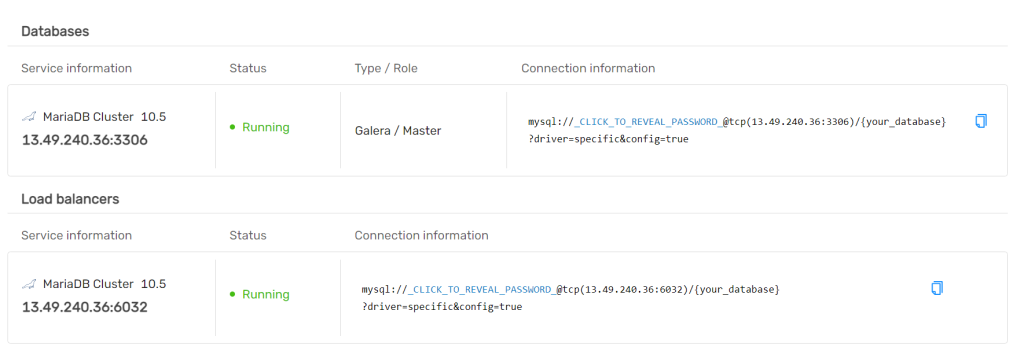
CCX will also provide you with some information allowing you to better understand the needs of your database nodes by monitoring them: choose a chart set from those available (system, database nodes, or load balancers) and you will be able to see a whole new world related to your database instances in front of your eyes: you will able to see the average load, CPU and RAM usage, network and disk space usage, disk I/O utilization, disk IOPS and disk throughput, information relevant to the connections to your database, information relevant to your queries, table locking, scan operations and temporary tables, memory utilization, even load balancers. You will also be able to choose a preset range of time where you will be able to see the activity of your database nodes:
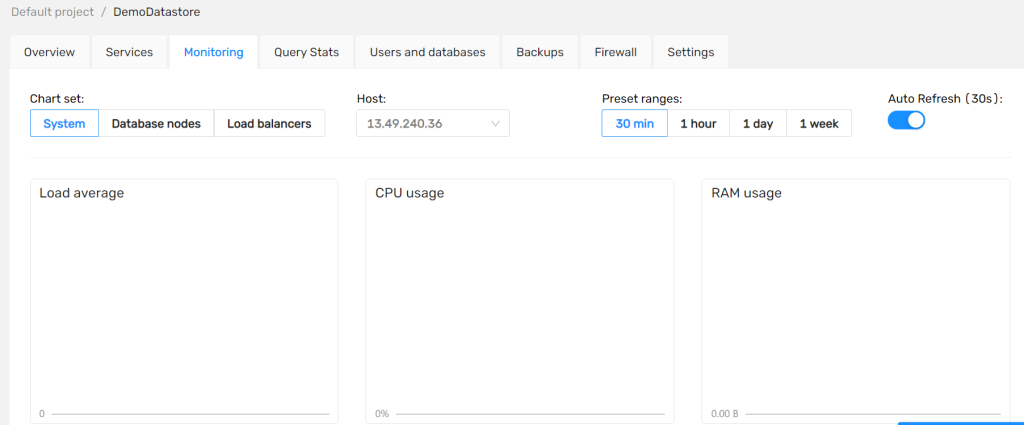
Want to observe your query statistics? No problem here either!
CCX will let you observe the top queries running on your database instances, as well as let you observe the amount of current connections in your database:
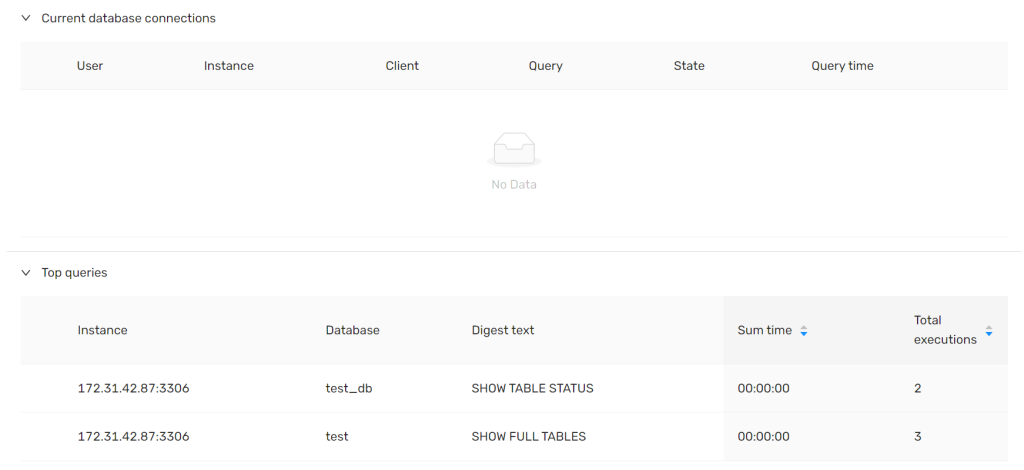
CCX will even let you add a new user or database! Simply head over to the Users and databases section to complete these actions:
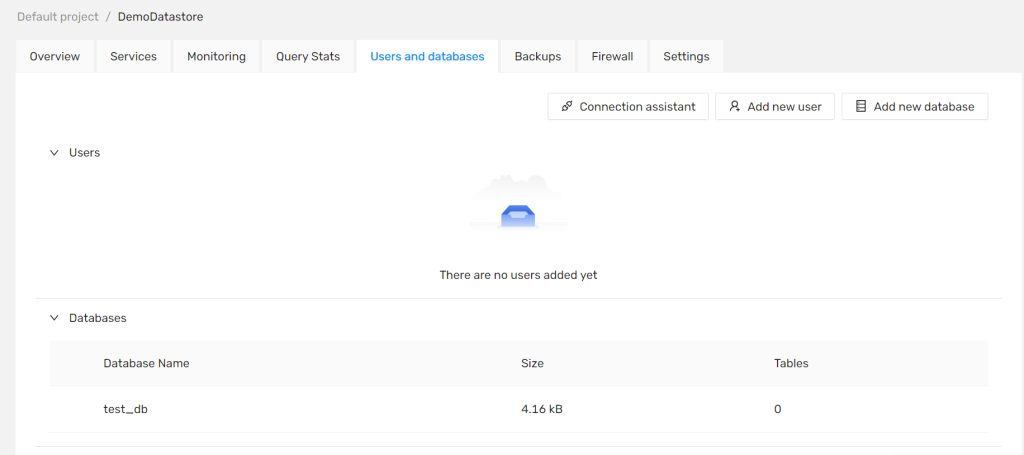
Want to take care of your backups? See if they are incremental, full or not? When were they created? What’s their schedule? No problem here either, simply click on the Backups tab:
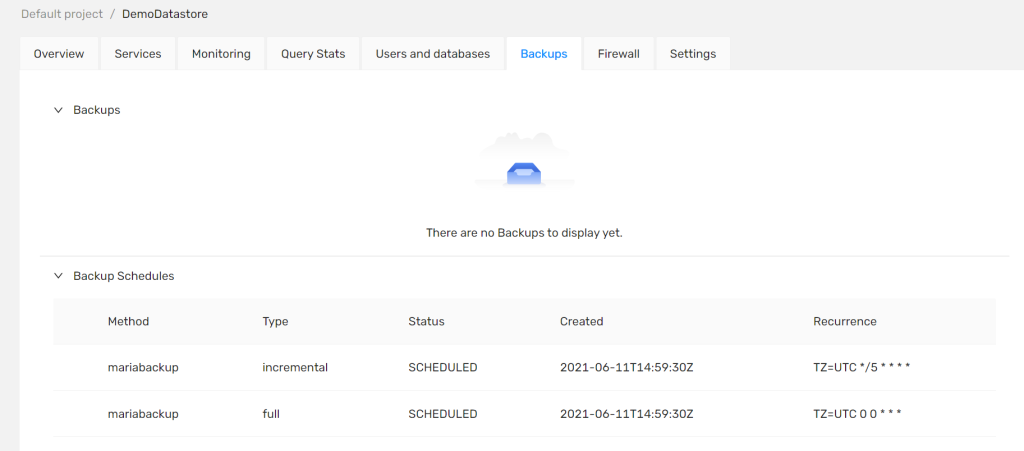
Finally, you can modify the settings relevant to your nodes: you can even specify when they should be taken care of (maintained) – on your schedules!
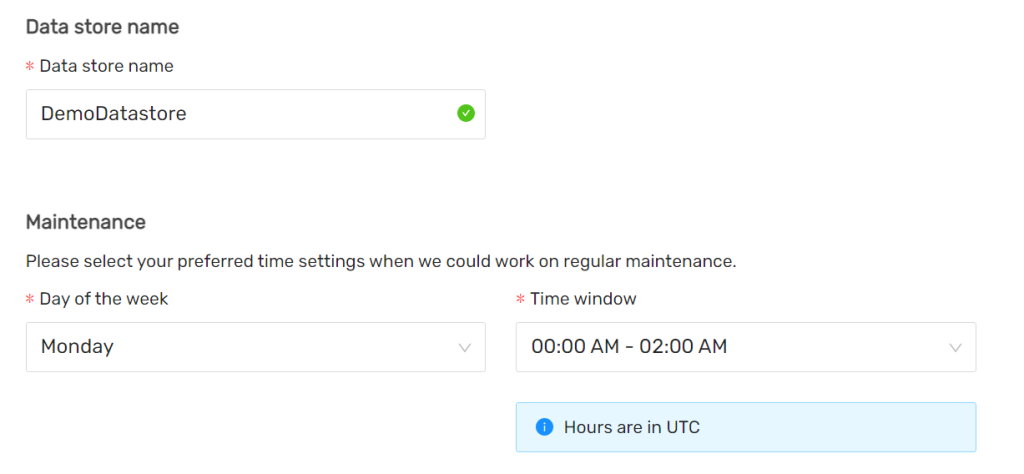
Summary
Database-as-a-service (DBaaS) solutions can be very useful and beneficial – even if you do not have any database experience whatsoever! If you want to learn how databases operate, DBaaS can be a great choice. Even if you do have extensive experience, DBaaS can still be very helpful and beneficial – if you like what DBaaS can offer, give CCX a go today!

